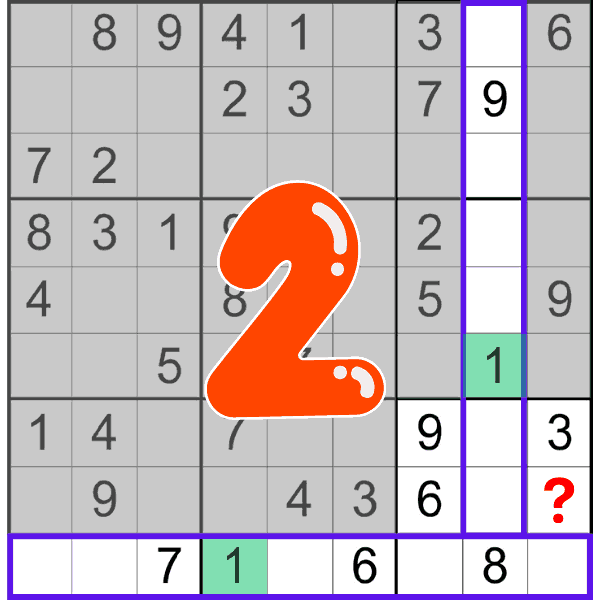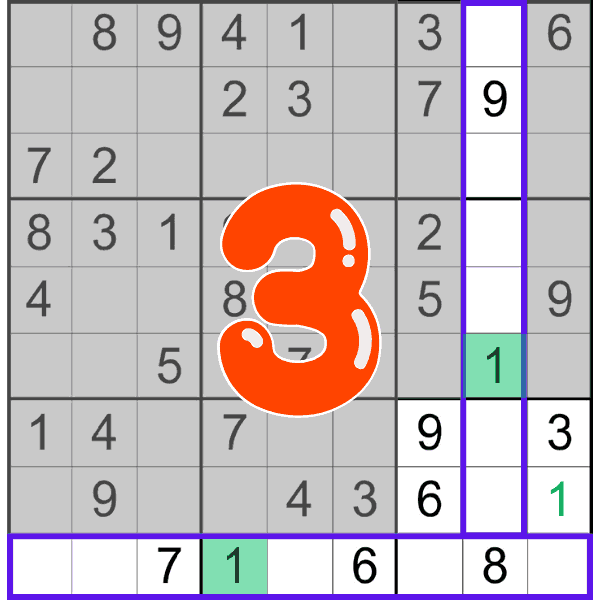Solving Sudoku starts by following the ‘Last Remaining Cell’ technique, which is one of the most important techniques used by beginners and advanced players. It works on the principle that for every 3×3 box, vertical column, and horizontal row in a Sudoku puzzle each number from 1 through 9 should only appear once.

Let’s consider an example. Image 1 is the puzzle you are going to solve.
As shown in image 2 focus on the area with white background. Apply the three Sudoku rules here. The white area highlighted with purple frame cannot contain number 1, since number 1 appears only once in the horizontal row and the vertical column. Hence, the only possibility for the question marked cell is 1.
Number 1 is the final answer as shown in image 3.


This way we can ignore cells where number 1 cannot go until we find ourselves with only one choice for placing this digit which is done by systematic exclusion. In other words, you solve the block by identifying ‘Last Remaining Cell’ containing digit 1 among others; this strategy may also be adopted across all blocks and digits existing within the framework.
All but one possibility is eliminated when using this approach to identify any digit’s location in each cell. Most aspiring Sudoku solvers see this particular technique as part of their essential toolbox due to its simplicity and effectiveness.
To practice more DOWNLOAD your free printable Sudoku puzzle book now!
